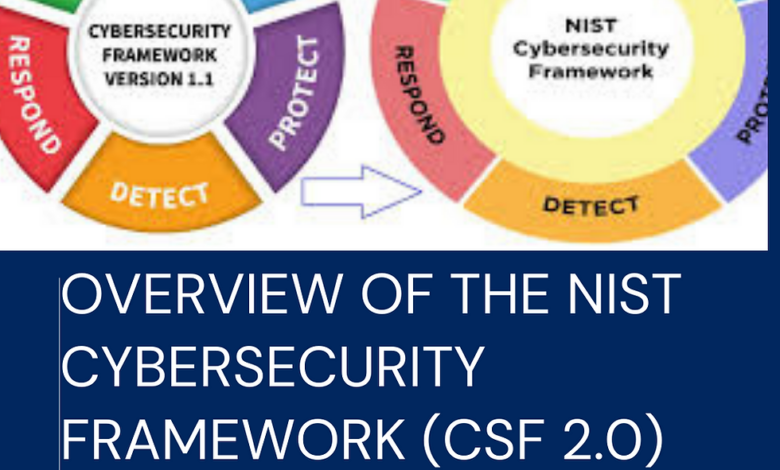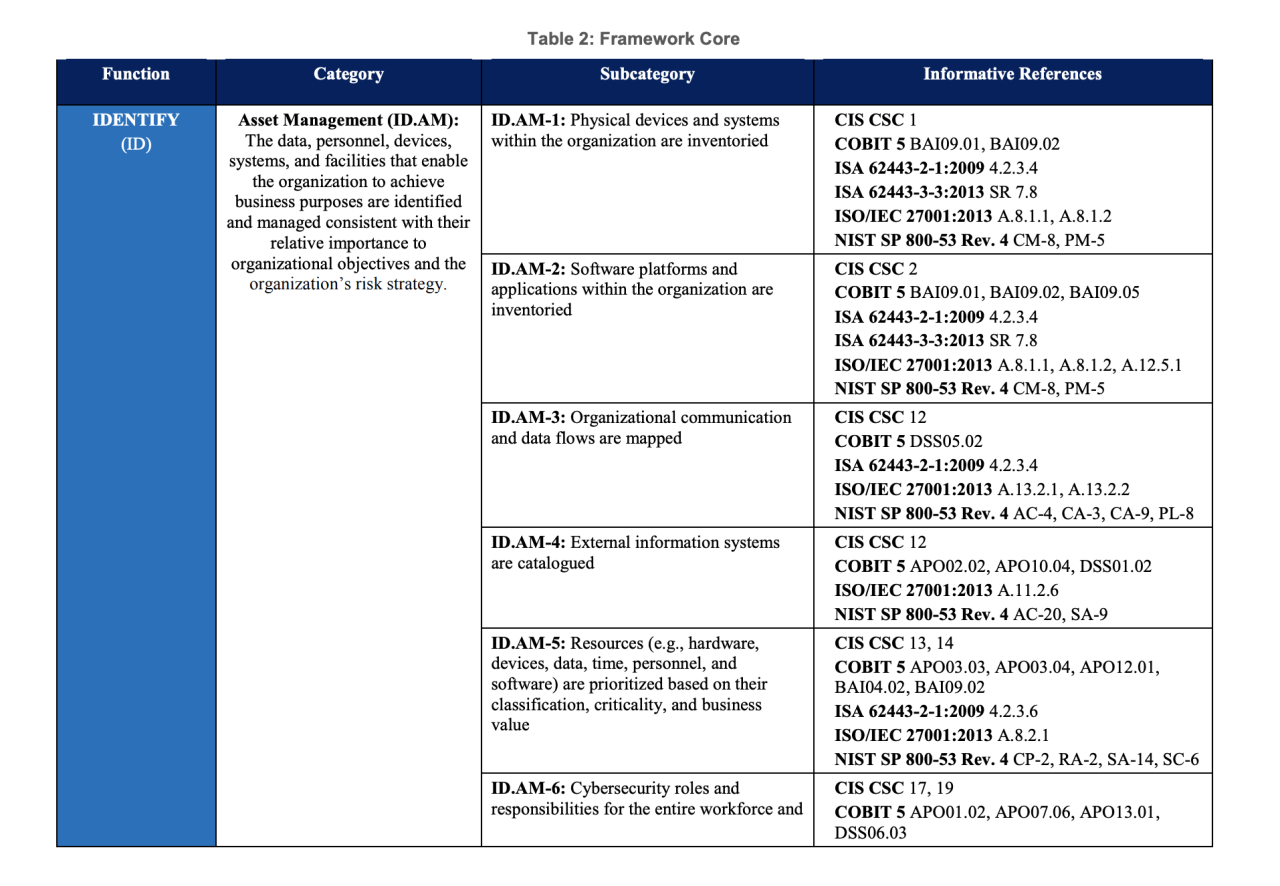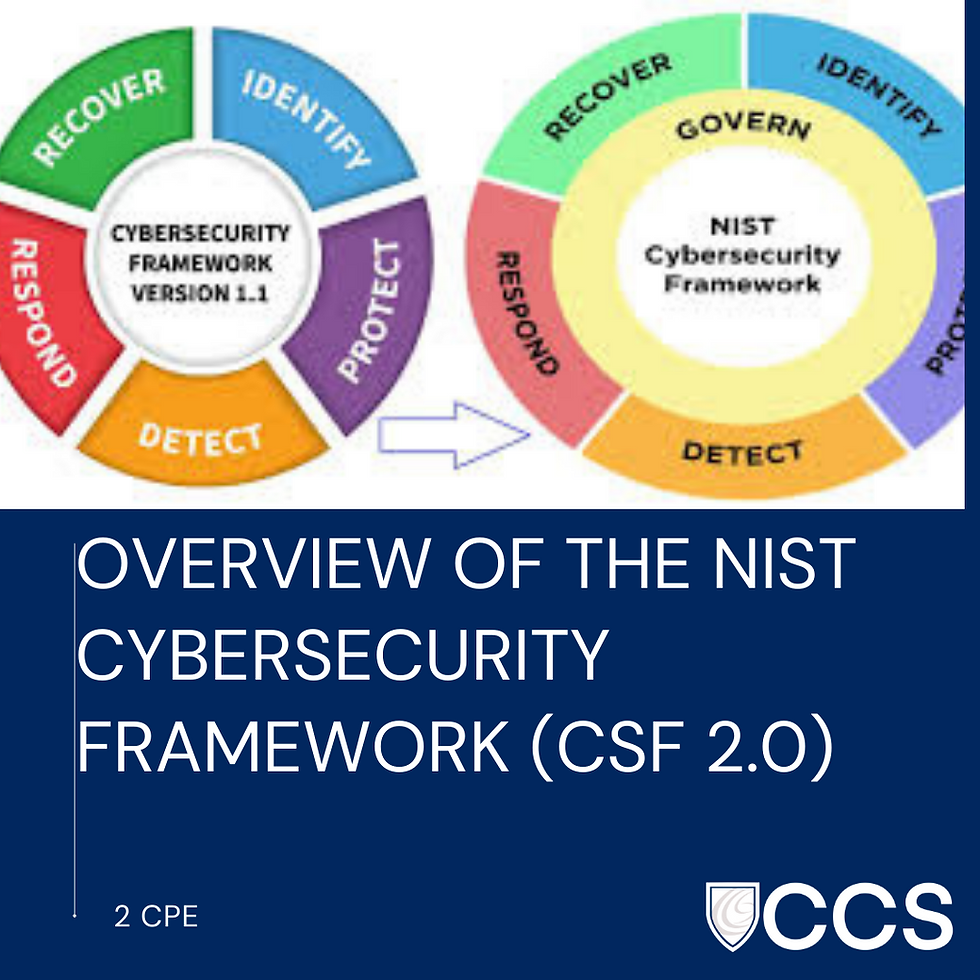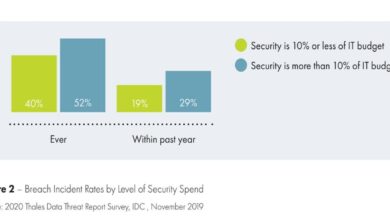
How NIST CSF 2.0 Helps Small Businesses
How nist csf 2 0 helps small businesses – How NIST CSF 2.0 helps small businesses thrive in today’s digital landscape is a crucial question. Cybersecurity threats aren’t just for large corporations; small businesses are increasingly vulnerable. This framework, however, provides a practical, adaptable path to significantly improve their security posture without breaking the bank. We’ll explore how NIST CSF 2.0 simplifies cybersecurity for smaller organizations, focusing on practical steps and readily available resources.
From identifying your most valuable assets and potential risks to implementing effective data protection and incident response plans, we’ll break down the framework’s core functions in a way that’s easy for any small business owner to understand and implement. We’ll also cover cost-effective solutions and readily available tools to help you build a robust cybersecurity strategy without needing a dedicated IT team.
Introduction to NIST CSF 2.0 and Small Businesses
The NIST Cybersecurity Framework (CSF) version 2.0 provides a voluntary framework for organizations of all sizes to manage and reduce their cybersecurity risks. While initially designed for larger enterprises, its adaptable nature makes it incredibly valuable for small businesses, often the most vulnerable targets of cyberattacks. This post will explore how small businesses can leverage NIST CSF 2.0 to strengthen their cybersecurity posture.The core principles of NIST CSF 2.0 revolve around five functions: Identify, Protect, Detect, Respond, and Recover.
These functions represent a lifecycle approach to cybersecurity, encompassing all aspects from understanding your assets and risks (Identify) to recovering from a successful attack (Recover). The framework isn’t prescriptive; it doesn’t dictate specific technologies or solutions. Instead, it provides a flexible structure to guide organizations in developing their own customized cybersecurity plans based on their unique needs and resources.
Challenges Faced by Small Businesses Regarding Cybersecurity
Small businesses often lack the resources – both financial and human – dedicated to robust cybersecurity. They may lack dedicated IT staff, sophisticated security tools, or the budget for comprehensive cybersecurity training. This vulnerability is further exacerbated by a common misconception that they are too small to be a target for cybercriminals; this couldn’t be further from the truth.
Small businesses often hold valuable customer data and financial information, making them attractive targets for ransomware attacks, phishing scams, and other cyber threats. Furthermore, the lack of awareness regarding best practices and the complexities of cybersecurity often leaves them unprepared.
Adapting NIST CSF 2.0 for Small Businesses
The beauty of NIST CSF 2.0 lies in its flexibility. Small businesses can adapt the framework by focusing on the most critical aspects of their operations. For example, a small retail business might prioritize protecting customer credit card information (Protect function) and establishing procedures for responding to a data breach (Respond function). A small consulting firm, on the other hand, might focus on securing sensitive client data (Protect) and implementing strong access controls (Identify).
The key is to prioritize based on risk assessment, focusing on the most likely and impactful threats to the business. This might involve simpler, less expensive solutions than those employed by larger corporations. For instance, instead of a complex Security Information and Event Management (SIEM) system, a small business might use a basic intrusion detection system or rely on cloud-based security services that offer cost-effective solutions.
Regular employee training on phishing awareness and password security, a relatively inexpensive measure, can significantly reduce the risk of successful attacks.
Examples of NIST CSF 2.0 Implementation in Small Businesses
Consider a small bakery. Using NIST CSF 2.0, they could:
- Identify: Catalog their IT assets (computers, POS system, online ordering platform), identify sensitive data (customer information, financial records), and assess potential threats (phishing, malware).
- Protect: Implement strong passwords, use firewalls, regularly update software, and train employees on cybersecurity best practices.
- Detect: Use basic antivirus software, monitor network activity for suspicious behavior, and establish procedures for reporting security incidents.
- Respond: Develop an incident response plan outlining steps to take in case of a cyberattack, including contacting law enforcement and data breach notification procedures.
- Recover: Establish data backup and recovery procedures to ensure business continuity in case of a system failure or data loss.
Another example could be a freelance graphic designer. Their adaptation might focus on:
- Identify: Inventory their software and hardware, including laptops and cloud storage.
- Protect: Use strong passwords and two-factor authentication for all accounts, regularly back up their work to the cloud, and encrypt sensitive client files.
- Detect: Regularly scan their devices for malware and monitor their email for suspicious activity.
- Respond: Have a plan for dealing with data breaches, including contacting clients and reporting to relevant authorities.
- Recover: Maintain regular backups of their work and have a plan for restoring their systems in case of failure.
Implementing the Identify Function in Small Businesses
The Identify function within the NIST Cybersecurity Framework (CSF) 2.0 is crucial for small businesses, laying the groundwork for a robust cybersecurity posture. Understanding your assets and associated risks is the first step towards effective protection. This process, while seemingly simple, requires careful consideration and consistent effort to be truly effective. Failing to properly identify assets leaves your business vulnerable to a range of threats.Implementing the Identify function involves a systematic approach to cataloging your business’s assets and assessing the potential risks associated with each.
This includes not just IT assets, but also physical assets, intellectual property, and even personnel. A comprehensive understanding of your assets’ value and the potential impact of their compromise is paramount. This information will inform subsequent risk management decisions.
Asset Identification and Risk Assessment
Identifying assets for a small business using NIST CSF 2.0 involves a methodical process. First, create a comprehensive inventory of all IT assets, including computers, servers, mobile devices, network equipment, and software. Next, identify non-IT assets such as physical documents containing sensitive information, customer databases, and even physical locations. For each asset, determine its criticality to business operations – how much would its loss or compromise impact the business?
Finally, assess the potential risks associated with each asset. This might involve considering vulnerabilities, threats (such as malware or phishing), and the potential impact of a successful attack. This step necessitates understanding the value of the asset and the potential consequences of a breach. For example, the loss of customer data could lead to significant fines and reputational damage, while the loss of a critical server could halt operations entirely.
Best Practices for IT Asset Inventory Management
Effective IT asset inventory management in a small business setting requires a simple yet robust system. Regularly updating your inventory is key; this should be a continuous process, not a one-time task. Utilize automated tools where possible to streamline the process, even simple spreadsheet software can be effective. Assign clear responsibilities for maintaining the inventory; one person should be accountable for its accuracy and completeness.
Regularly review and reconcile your inventory with physical assets to ensure accuracy. Consider using asset tagging (physical or virtual) to easily identify and track assets. This helps in audits and recovery efforts. Documenting the lifecycle of each asset, from acquisition to disposal, is also vital for compliance and security.
Simple Asset Inventory Template
A straightforward asset inventory template can significantly aid in managing your assets. The following HTML table provides a basic structure:
| Asset Name | Asset Type | Criticality | Location |
|---|---|---|---|
| Laptop A | Laptop | High | Office |
| Server 1 | Server | Critical | Server Room |
| Customer Database | Software | Critical | Server 1 |
| Router | Network Device | High | Office |
This template allows for easy tracking of essential information. Remember to adapt and expand this template to suit your specific needs as your business grows and its assets diversify. Adding columns for things like serial numbers, purchase dates, and software versions will enhance the inventory’s value.
Protecting Data with the Protect Function
The NIST Cybersecurity Framework (CSF) 2.0’s Protect function is crucial for small businesses, focusing on safeguarding data and systems against threats. This involves implementing a range of security controls to minimize the impact of a successful cyberattack. Effective data protection isn’t just about preventing breaches; it’s about mitigating the damage if one occurs. This section will explore practical data security controls suitable for small businesses, directly addressing the requirements of the Protect function within NIST CSF 2.0.
Access Control Measures for Small Businesses
Implementing robust access control is fundamental to data protection. This involves limiting who can access specific data and systems based on their roles and responsibilities. For small businesses, this might seem simple, but a well-defined access control strategy is vital. Consider using a tiered approach, granting different levels of access based on job functions. For example, administrative staff might have full access to certain systems, while sales personnel only need access to customer databases.
Password management is a critical component. Enforce strong, unique passwords, and consider using a password manager to simplify this process for employees. Regular password changes and multi-factor authentication (MFA) add an extra layer of security, significantly reducing the risk of unauthorized access. Regular audits of user access rights should be conducted to ensure that only necessary permissions are granted and outdated permissions are removed.
Data Loss Prevention (DLP) Strategies for Small Businesses
Data loss prevention (DLP) strategies are essential for safeguarding sensitive business information. For small businesses, this might involve a combination of technical and procedural measures. Implementing DLP software can help monitor data movement and identify potential leaks. This software can scan emails, files, and other data streams for sensitive information, alerting administrators to potential breaches. However, DLP software alone isn’t sufficient.
Employee training is crucial. Employees need to understand what constitutes sensitive data and the importance of following data handling procedures. Regular backups are another critical component of a robust DLP strategy. This ensures that even if data is lost or compromised, a copy is available for recovery. Backups should be stored securely, ideally offsite, to protect against physical damage or theft.
Consider using cloud-based backup solutions, which offer both convenience and increased security. Regular testing of the backup and recovery process is also important to ensure it functions correctly in the event of a data loss incident.
Responding to Incidents with the Respond Function
The NIST CSF 2.0 Respond function is crucial for small businesses, providing a framework to manage and recover from cybersecurity incidents. A robust response plan minimizes downtime, protects sensitive data, and maintains customer trust. Failing to adequately address security breaches can lead to significant financial losses, reputational damage, and legal repercussions. This section Artikels a sample incident response plan and details the steps involved in handling a security breach.
A well-defined incident response plan should be a living document, regularly reviewed and updated to reflect changes in the business environment and technology. It should be easily accessible to all relevant personnel and should include clear roles and responsibilities.
Sample Incident Response Plan for a Small Business
This plan incorporates key elements from NIST CSF 2.0’s Respond function, adapting them to the specific needs of a small business. The plan Artikels a structured approach to handling various types of security incidents, from minor data breaches to full-scale system failures. The plan prioritizes containment, eradication, recovery, and post-incident activities.
The following steps Artikel a basic incident response plan. Remember to tailor this plan to your specific business operations and infrastructure.
- Preparation: Define roles and responsibilities, establish communication protocols, identify critical systems and data, and create a list of contact information for external resources (e.g., law enforcement, legal counsel, cybersecurity consultants).
- Detection & Analysis: Implement monitoring tools to detect suspicious activity. Analyze security logs and alerts to identify the nature and scope of the incident.
- Containment: Isolate affected systems to prevent further damage. This might involve disconnecting affected devices from the network or disabling affected accounts.
- Eradication: Remove malware or malicious code from affected systems. This often involves reinstalling software, reformatting hard drives, or employing specialized tools.
- Recovery: Restore systems and data from backups. Verify system integrity and functionality. Implement changes to prevent recurrence of the incident.
- Post-Incident Activity: Conduct a thorough post-incident review to identify weaknesses in security controls. Update the incident response plan based on lessons learned. Document the entire incident response process.
Containing and Eradicating a Security Breach, How nist csf 2 0 helps small businesses
Containing a security breach involves immediately isolating affected systems and preventing further compromise. This might involve disconnecting affected computers from the network, disabling user accounts, or blocking malicious IP addresses. Eradication focuses on removing the root cause of the breach, such as malware or unauthorized access. This might involve using anti-malware software, reinstalling operating systems, or engaging external cybersecurity experts.
The speed and effectiveness of containment and eradication directly impact the extent of damage and recovery time. A swift response can minimize data loss and reputational harm.
The Importance of Regular Backups and Disaster Recovery Planning
Regular backups are essential for business continuity. They provide a reliable way to restore systems and data in the event of a security breach or other disaster. A comprehensive disaster recovery plan Artikels the steps needed to recover business operations after a major disruption. This includes identifying critical systems and data, establishing recovery time objectives (RTOs) and recovery point objectives (RPOs), and testing the plan regularly.
For small businesses, cloud-based backup solutions offer a cost-effective and scalable approach to data protection. These solutions often provide automated backups and disaster recovery capabilities. Regular testing of backups ensures data integrity and readiness for restoration.
Improving Cybersecurity Posture with the Recover Function
The NIST CSF 2.0 Recover function is crucial for small businesses, not just as a reaction to a breach, but as a proactive measure to ensure business continuity. A well-defined recovery plan minimizes downtime, reduces financial losses, and maintains customer trust. It’s about building resilience, not just reacting to crises. This section will explore how to design a recovery plan, the importance of continuous improvement, and effective communication strategies.A robust recovery plan is the cornerstone of a strong cybersecurity posture.
It details the steps to take to restore systems and data after a cybersecurity incident. This isn’t a one-size-fits-all solution; it needs to be tailored to the specific vulnerabilities and risks facing your business.
Recovery Plan Design for Small Businesses
A small business recovery plan should include several key components. First, a comprehensive inventory of critical systems and data is essential. This includes hardware, software, applications, and databases. Knowing what you have and where it’s located is the first step in knowing how to restore it. Second, the plan needs to Artikel procedures for restoring these systems and data.
This could involve restoring from backups, reinstalling software, or using disaster recovery sites. Third, it’s crucial to define roles and responsibilities for each team member during a recovery operation. Who is responsible for what? Who makes the critical decisions? Finally, the plan should include a detailed communication strategy to keep stakeholders informed.
The Role of Lessons Learned and Continuous Improvement
The recovery process isn’t just about restoring systems; it’s also about learning from the experience. After an incident, a thorough post-incident review should be conducted. This involves analyzing what went wrong, identifying weaknesses in the existing security measures, and determining what steps can be taken to prevent similar incidents in the future. This iterative process of learning and improvement is vital for maintaining a robust cybersecurity posture.
For example, if a phishing attack led to a breach, the post-incident review might reveal a need for improved employee security awareness training.
Communication Strategies During Recovery Efforts
Effective communication is crucial during a recovery operation. Stakeholders need to be kept informed about the incident, the recovery progress, and the expected timeline for restoring services. This might involve regular email updates, phone calls, or even press releases, depending on the severity of the incident and the number of affected stakeholders. Transparency is key; hiding information or downplaying the severity of the situation can damage trust and reputation.
For example, a small bakery experiencing a ransomware attack might send out an email to customers explaining the situation and the expected downtime, reassuring them that customer data is being protected. A larger scale incident might require a more formal press release.
Leveraging NIST CSF 2.0’s Improve Function for Ongoing Security: How Nist Csf 2 0 Helps Small Businesses

The NIST Cybersecurity Framework (CSF) 2.0 isn’t a one-time implementation; it’s a continuous cycle of improvement. The “Improve” function is crucial for small businesses to not only meet current security needs but to proactively adapt to the ever-evolving threat landscape. By regularly assessing their cybersecurity posture and making necessary adjustments, small businesses can significantly reduce their vulnerability to cyberattacks and maintain a robust security profile.
This ongoing process ensures that security measures remain effective and aligned with the business’s evolving needs and risks.The Improve function encourages a proactive approach to cybersecurity, moving beyond simple compliance to a culture of continuous improvement. This involves regularly reviewing security controls, identifying gaps, and implementing improvements based on lessons learned, new threats, and changes within the business itself.
This iterative process allows small businesses to refine their security posture, strengthening it over time and building resilience against cyber threats. It’s not about achieving perfection, but about continuous progress towards a more secure environment.
Key Performance Indicators (KPIs) for Measuring Cybersecurity Effectiveness
Tracking key performance indicators (KPIs) provides concrete evidence of the effectiveness of implemented security measures. Regular monitoring of these metrics allows small businesses to identify areas needing attention and demonstrate the value of their cybersecurity investments. Without this data-driven approach, improvements become guesswork, potentially leading to wasted resources and persistent vulnerabilities.
- Number of Security Incidents Detected and Resolved: Tracking the number of security incidents, including phishing attempts, malware infections, and unauthorized access attempts, provides a direct measure of the effectiveness of preventative measures. A decrease in this number signifies a strengthening of the security posture.
- Time to Resolve Security Incidents: The time it takes to detect and resolve security incidents is a critical indicator of responsiveness. Faster resolution times minimize potential damage and downtime.
- Percentage of Employees Completing Security Awareness Training: Regular security awareness training is essential for educating employees about potential threats and best practices. Tracking completion rates ensures that training programs are reaching their intended audience.
- Number of Vulnerabilities Identified and Remediated: Regular vulnerability scans identify weaknesses in systems and applications. Tracking the number of vulnerabilities found and the speed of remediation demonstrates proactive vulnerability management.
- Employee adherence to security policies: Measuring the rate of employee compliance with established security policies, such as password management guidelines and data handling procedures, is crucial to ensure that policies are effective and enforced.
Tools and Resources for Implementing and Maintaining NIST CSF 2.0
Small businesses often have limited resources, making the implementation and maintenance of a robust cybersecurity program challenging. Fortunately, several free and affordable tools and resources are available to support their efforts. Leveraging these resources can significantly improve the efficiency and effectiveness of their cybersecurity initiatives.
- NIST CSF Implementation Tiers: The NIST CSF provides implementation tiers, allowing small businesses to tailor their approach based on their resources and risk tolerance. Starting with a lower tier and gradually progressing allows for manageable implementation.
- Free and Open-Source Security Tools: Many free and open-source tools are available for tasks such as vulnerability scanning, intrusion detection, and security information and event management (SIEM). These tools can significantly reduce the financial burden of cybersecurity.
- Cloud-Based Security Services: Cloud-based security services offer scalable and cost-effective solutions for small businesses. These services often provide features such as intrusion detection, data loss prevention, and email security at a fraction of the cost of on-premise solutions.
- Government and Industry Resources: Numerous government agencies and industry organizations provide free resources, including guidance, best practices, and training materials, to assist small businesses in improving their cybersecurity posture. Examples include the Cybersecurity & Infrastructure Security Agency (CISA) and the National Institute of Standards and Technology (NIST) themselves.
Cost Considerations and Resource Allocation
Implementing NIST CSF 2.0 doesn’t have to break the bank for small businesses. While a comprehensive cybersecurity program requires investment, the framework’s flexibility allows for a phased approach tailored to a company’s specific needs and budget. Prioritizing critical assets and focusing on the most impactful controls first can significantly improve security posture without overwhelming resources. The long-term cost savings from preventing data breaches and operational disruptions far outweigh the initial investment.The cost-effectiveness of NIST CSF 2.0 implementation hinges on strategic planning and resource allocation.
Small businesses can leverage free and low-cost resources to build a strong foundation, gradually incorporating more sophisticated tools and technologies as their budget allows. Focusing on preventative measures, such as employee training and robust password policies, is often more cost-effective than reactive measures like incident response and data recovery.
Free and Low-Cost Resources for Small Businesses
Many resources are available to assist small businesses in implementing NIST CSF 2.0 without significant financial strain. These resources significantly reduce the barrier to entry for robust cybersecurity practices. Government agencies and non-profit organizations frequently offer free or subsidized cybersecurity training, tools, and assessments.
- NIST Cybersecurity Framework publications: The NIST CSF itself is freely available online, providing comprehensive guidance and best practices.
- Small Business Administration (SBA) resources: The SBA offers various resources and programs to help small businesses improve their cybersecurity posture, including educational materials and links to cybersecurity assistance programs.
- Free online cybersecurity training: Numerous organizations provide free or low-cost online cybersecurity training courses, covering topics such as phishing awareness, password management, and secure coding practices.
- Open-source security tools: A wide range of open-source security tools are available for tasks such as vulnerability scanning, intrusion detection, and malware analysis. While requiring technical expertise to implement effectively, they represent a cost-effective alternative to commercial solutions.
- Cybersecurity awareness training platforms: Some platforms offer free or discounted plans for small businesses, providing employees with essential cybersecurity awareness training.
Hypothetical Cybersecurity Budget Allocation for a Small Business
This example demonstrates a potential budget allocation for a small business with 10 employees and an annual revenue of $500,000. The allocation prioritizes foundational security measures and gradually incorporates more advanced capabilities. Note that these figures are estimates and should be adjusted based on individual business needs and risk assessments.
- Employee Security Awareness Training (Annual): $1,000 (Includes online training modules and phishing simulations).
- Multi-Factor Authentication (MFA) Software (One-time purchase): $500 (For all employee accounts).
- Basic Antivirus Software (Annual Subscription): $600 (For all computers and mobile devices).
- Password Management Software (Annual Subscription): $200 (For secure password storage and management).
- Data Backup and Recovery Solution (Annual Subscription): $1,200 (Cloud-based solution for regular data backups).
- Security Audits and Assessments (Annual): $2,000 (Can be outsourced to a qualified security professional or partially completed in-house with free tools).
- Incident Response Plan Development (One-time cost): $1,500 (Developing a documented plan to handle security incidents).
Case Studies

This section showcases real-world examples of small businesses successfully implementing the NIST Cybersecurity Framework (CSF) 2.0. These case studies highlight diverse approaches and demonstrate the framework’s adaptability across various sectors. Analyzing these successes offers valuable insights for other small businesses seeking to enhance their cybersecurity posture.
Successful NIST CSF 2.0 Implementation in a Retail Setting
The “Main Street Market,” a small grocery store chain with three locations, faced increasing concerns about data breaches and payment card fraud. Their existing security measures were insufficient. Implementing NIST CSF 2.0 helped them address these vulnerabilities.
- Approach: Main Street Market prioritized the Identify and Protect functions. They conducted a thorough risk assessment, identifying critical assets and vulnerabilities. They then implemented point-of-sale (POS) security upgrades, employee training programs focusing on phishing awareness, and multi-factor authentication for all systems.
- Outcomes: The implementation resulted in a significant reduction in security incidents. Employee awareness improved, leading to fewer phishing attempts being successful. The upgraded POS systems minimized the risk of payment card data breaches. They also saw a measurable improvement in their overall security posture.
NIST CSF 2.0 in a Small Healthcare Clinic
“Family Health Clinic,” a small medical practice, struggled with HIPAA compliance and protecting patient health information (PHI). They lacked a comprehensive cybersecurity plan. Adopting NIST CSF 2.0 provided a structured approach.
- Approach: Family Health Clinic focused on the Protect, Detect, and Respond functions. They implemented robust access controls, encrypted all PHI, and established incident response procedures. Regular security awareness training for staff was also implemented.
- Outcomes: The clinic achieved better HIPAA compliance. The improved security measures reduced the risk of PHI breaches. The established incident response plan ensured that any future incidents could be handled effectively and efficiently, minimizing potential damage.
Implementing NIST CSF 2.0 in a Small Hotel
“The Cozy Inn,” a boutique hotel, was concerned about data breaches involving guest information and payment details. Their previous security practices were ad-hoc and lacked a systematic approach. They chose to leverage NIST CSF 2.0.
- Approach: The Cozy Inn focused on the Identify, Protect, and Detect functions. They conducted a thorough inventory of their IT assets and identified critical systems. They then implemented strong password policies, updated their network security equipment, and introduced intrusion detection systems.
- Outcomes: The hotel saw an improvement in their ability to detect and respond to potential security threats. The implementation of strong password policies reduced the risk of unauthorized access. Regular security updates minimized vulnerabilities and protected guest data.
Final Conclusion
Implementing NIST CSF 2.0 doesn’t have to be daunting for small businesses. By adopting a phased approach and focusing on the most critical areas first, you can significantly improve your cybersecurity posture without overwhelming your resources. Remember, it’s about continuous improvement, not perfection. Start small, focus on your priorities, and regularly review and update your plan as your business grows and evolves.
With a proactive approach and the right resources, you can build a resilient security foundation that protects your business and your future.
Commonly Asked Questions
What is the cost of implementing NIST CSF 2.0 for a small business?
The cost varies greatly depending on your existing infrastructure and needs. Many resources are available for free or at low cost, making implementation affordable for even the smallest businesses. Focus on prioritizing the most critical areas first.
Do I need specialized IT expertise to implement NIST CSF 2.0?
While having an IT professional can be helpful, NIST CSF 2.0 is designed to be adaptable. Many aspects can be managed internally with readily available online resources and tools. Prioritize learning and understanding the core principles before seeking external help.
How much time is needed to implement NIST CSF 2.0?
Implementation is an ongoing process, not a one-time project. Start with a phased approach, focusing on one function at a time. Regular review and updates are crucial for long-term success.
Where can I find free resources to help with implementation?
NIST’s website itself is an excellent starting point. Numerous online guides, webinars, and even free cybersecurity tools are available to assist small businesses.





